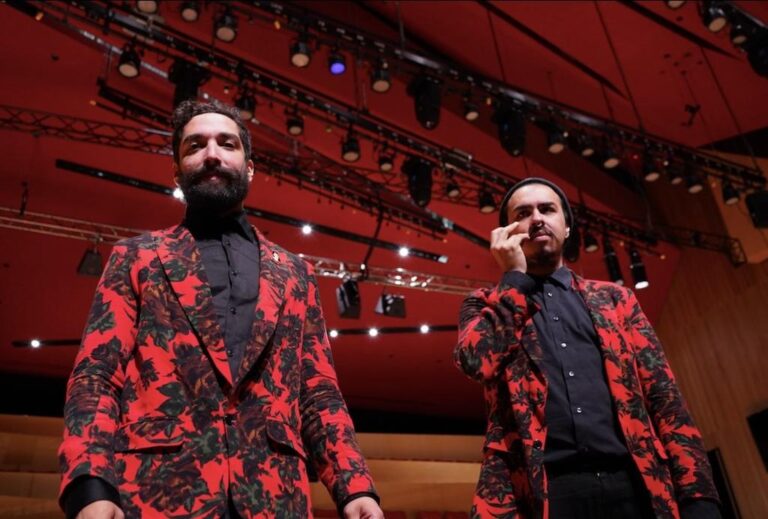Of all the great Latin American metropolises, Mexico City stands out not only for its vast territory and population but also for hosting a rich cultural history, fueled for centuries by indigenous peoples and migratory movements. Land of ritual dances, sones and sonideros, marimbas and mariachis, street bands and organ grinders, rancheras and boleros: Mexico’s capital is home to many musical traditions. But it also operates as a nerve center for new talent and modern sounds. A city that even produced artists capable of crossing both worlds, the old and the new, from Café Tacvba to Natalia Lafourcade.
Last year we explored new scenes on a national scale such as R&B and Lo-Fi, both oriented towards a chill musical mood. In these outbreaks, it’s not unusual to find artists from different parts settling in Mexico City, as did the rising R&B star Noa Sainz, originally from the Coahuila region. Even more striking is the case of Manuel Ferraz, who came from Venezuela to take over this new scene, with extensive collaborations in the fields of funk and hip-hop. Singer-songwriter, producer, and founder DJ of the local parties Fino Club and Boogie Club, Ferraz has definitely become a benchmark for groove in the city.
Precisely among Ferraz’s partners, we find the increasingly popular Sabino. Originally from Guadalajara, although now he plays locally in Mexico City, Pablo Castañeda Amutioque created a unique world of rap rhymes under this alias. That’s what his “sab-hop” is about, a personal way of expanding hip-hop with different rhythms, from reggae to reggaeton, relying on a live band and even having an acoustic format when the situation requires it.
Originally from the border city of Tijuana, Vanessa Zamora has also been making a name for herself in Mexico City. Under the premise of venturing into the less explored lands of pop, she was encouraged to combine her velvety voice with the sensual rhythms of R&B, as evidenced by her nostalgic song “Ayer”, released only as a single. Her new album is ready for this year: a new musical stage under the title of Damaleona (“lioness lady”), provided with a more retro sound, at times even psychedelic, and with more spiritual lyrics.
Girl Ultra is another key name in the burgeoning Mexican R&B scene. Behind this project is Mariana de Miguel, a talented young artist born and raised in the big capital. Musically she recognizes Beyoncé as her biggest influence. Unlike other singers, Girl Ultra adds collaborations that are out of the ordinary, be it an indie pop gem called “Punk” with Little Jesus or a bilingual song recorded in Los Angeles with Chicano singer-songwriter Cuco.
Nostalgia for retro has definitely made an impact on Aztec lands. Fatty, tape-recorded bass and drums provide an analog feel, highlighted by vintage keyboards and echoing guitars. And if we add yearning bolero tunes to that formula, the trip to the past seems complete. That sound imprint can be traced in many renowned artists, from the space rock band Zoé to the reggae pop star Caloncho. Of course, the retro vibe is even more noticeable in bolero devotees like the great Chilean-Mexican singer-songwriter Mon Laferte. Or like Daniela Spalla, another repatriated artist to add to this list, who many years ago left her native Córdoba, in Argentina, to settle and forge her nascent solo career in Mexico City.
So, since the bolero once again affirms its permanence in Latin music, why not go a little further and venture into “bolero-glam”? That’s the label raised by Daniel, Me Estás Matando. Formed in 2018 in Mexico City by Daniel Zepeda and Iván de la Rioja, this duo aims to revisit the Latin American songbook through the bolero. Inspired by the sighs and the typical melodrama of the genre, they face that fine job of adapting the old to the new, as if an old cassette player with romantic ballads was boosted in streaming times.
On that path of evoking sounds from the past, we find Juanpalitoschinos, another duo from the capital, made up of singers Friné Alejo and JP Guerrero. Their main influence is Japanese city pop – a subgenre of Japanese pop that sprung up in the ‘80s as a sort of yuppie fantasy, defined as pop songs with a big-city vibe. Of course, this retro-futuristic odyssey becomes even more interesting from a Latin performance, armed with an indie singing sensibility and a clear attraction to the danceable rhythms of disco music.
Another boy-girl duo from the Mexican capital to add to this list? Yes, there’s a fairly new one called Los Eclipses, also with its retro vibe and nostalgic touch. This is the new project made up of the singer Eva de Marce and the multi-instrumentalist Dan Solo. Groove bases, some electronic psychedelia, and voices that bewitch and hypnotize like a siren’s song seem to be the ingredients of their first and promising songs.
Last but not least, we close with one of the most significant duos based in Mexico City: Sotomayor. The siblings Paulina and Raúl Sotomayor blend Afro-Latin rhythms with electronic music, becoming a key name of the New Latin Wave movement – a legion of Latin American bands that explore their heritage through the sounds of today. And best of all, when they are not in duet mode, they give free rein to other adventures, such as the solo career of Paulina (Pahua) and the different projects of Raúl (Tonga Conga, Flora Vida).
Credits: This roundup was curated with the help of Sean Fischer aka French Braids


